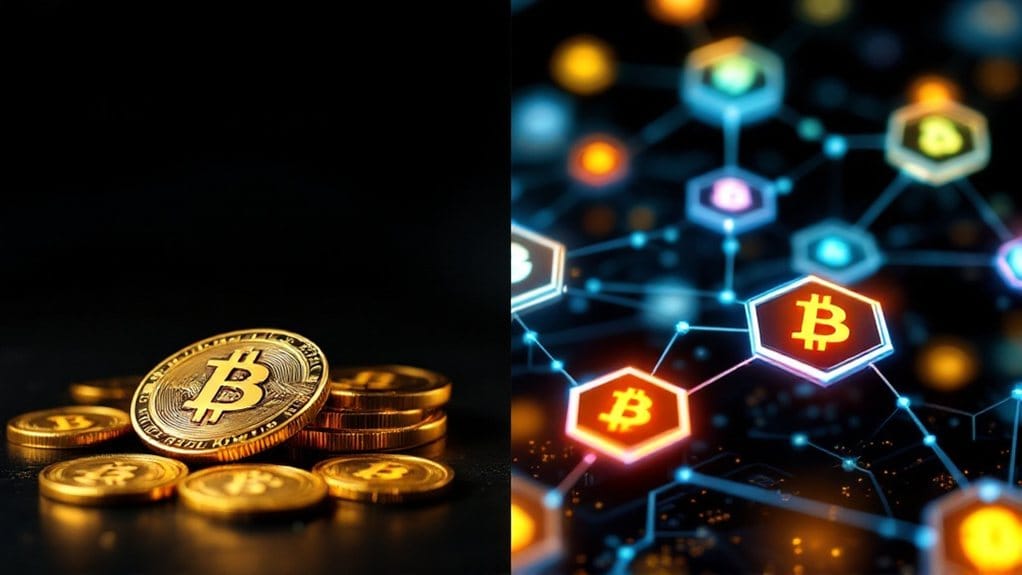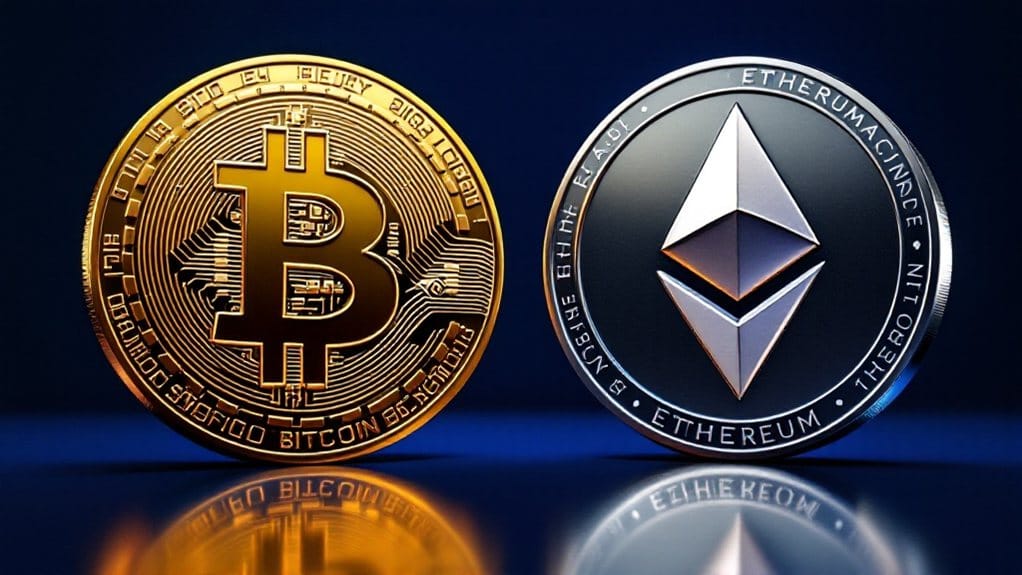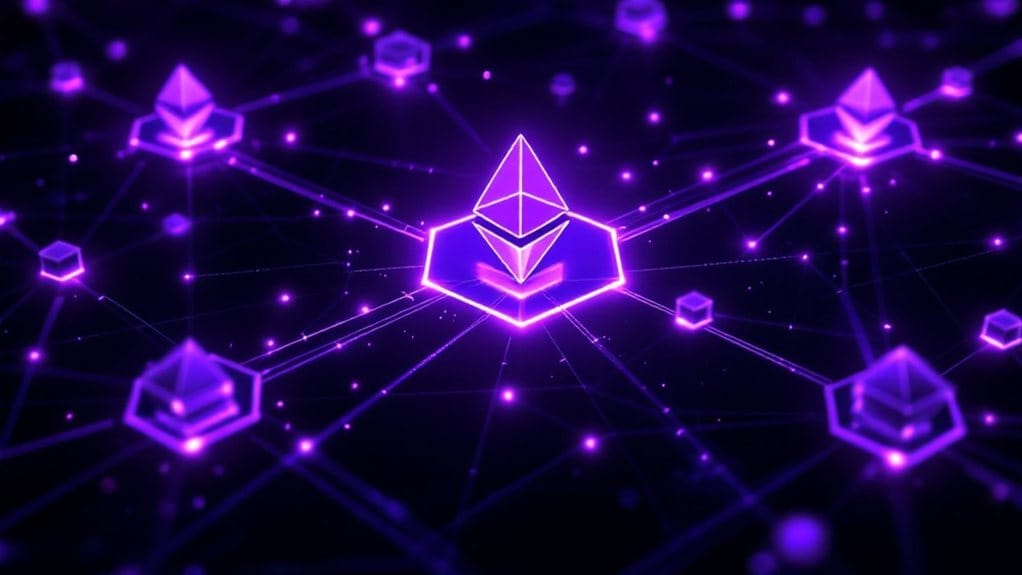Coins and tokens represent fundamentally different types of digital assets in the cryptocurrency ecosystem. Coins, like Bitcoin, operate on their own proprietary blockchains with independent security protocols and function primarily as digital currencies. Tokens, however, are built on existing blockchain platforms like Ethereum and serve diverse purposes, from governance rights to representing real-world assets. While coins require significant infrastructure investment and maintain value through scarcity, tokens utilize smart contracts for easier creation and derive value from their associated projects. Further exploration reveals vital distinctions in security, scalability, and implementation potential.

While both coins and tokens operate within the cryptocurrency ecosystem, their fundamental differences lie in their underlying infrastructure and operational independence. Coins, such as Bitcoin and Ethereum, function on their proprietary blockchains with dedicated security protocols and transaction validation mechanisms, requiring considerable infrastructure investment and development resources. These digital currencies are limited in supply to maintain their value over time.
Understanding cryptocurrency requires grasping the core distinction between coins and tokens: native blockchain independence versus platform dependency.
In contrast, tokens utilize existing blockchain platforms, particularly Ethereum, utilizing smart contracts for their creation and governance without the need to establish independent networks. Popular tokens often conform to the ERC-20 standard on Ethereum.
The distinct nature of coins and tokens extends to their primary functions and use cases within the digital economy. Coins mainly serve as mediums of exchange and stores of value, operating in a manner akin to traditional currencies in digital form. The decentralized ledger technology ensures transparent and immutable transaction records across the network.
Tokens, however, exhibit greater versatility, enabling functions ranging from governance rights in decentralized autonomous organizations to representing real-world assets in security token offerings.
The creation and distribution methods further differentiate these digital assets, with coins typically emerging through mining processes that validate transactions and secure their respective networks.
Token creation, conversely, occurs through more streamlined processes such as initial coin offerings (ICOs), token generation events, or smart contract deployment on established blockchains, greatly reducing the technical barriers to entry.
Value determination mechanisms also vary greatly between coins and tokens. Coins derive their value primarily from their utility as currency, scarcity, and the strength of their underlying blockchain networks.
Token valuations, however, are more closely tied to the success of their associated projects, platforms, or real-world applications, making them particularly susceptible to project-specific developments and market sentiment.
The technological architecture underlying these digital assets creates distinct security considerations and scalability challenges. Coins maintain independent security protocols through their native blockchains, while tokens inherit the security features and limitations of their host platforms.
This dependency means that token performance and scalability are inherently linked to the capabilities of their underlying blockchain infrastructure, influencing their potential for widespread adoption and practical implementation.
FAQs
Can Tokens Be Converted Into Coins, and What Is the Process?
Tokens can be converted into coins through diverse mechanisms, primarily utilizing cross-chain bridges and smart contracts.
The process typically involves burning or locking the original tokens on their native blockchain while minting equivalent coins on the target blockchain.
Token swaps require careful consideration of conversion rates, security protocols, and blockchain compatibility, often facilitated by platforms like RenVM or centralized exchanges that manage the technical conversion aspects.
How Do Hardware Wallets Handle the Storage of Tokens Versus Coins?
Hardware wallets handle both coins and tokens through secure private key storage, with coins utilizing native blockchain integration and tokens requiring additional smart contract support.
For coins, the wallet directly interacts with their respective blockchains, while tokens are managed through the host blockchain’s infrastructure.
The storage mechanism remains identical for both, as the wallet securely stores private keys offline, enabling transaction signing without exposing sensitive cryptographic data.
Which Is Better for Long-Term Investment: Cryptocurrency Coins or Tokens?
Cryptocurrency coins generally present a more suitable option for long-term investment due to their established infrastructure and greater stability.
While tokens offer higher potential returns through innovative utilities and growth prospects, they carry increased volatility and regulatory risks.
Investment strategy should align with individual risk tolerance, with coins like Bitcoin providing steady value preservation and tokens offering speculative growth opportunities within specific blockchain ecosystems.
Do Tokens Require More Gas Fees Than Coins for Transactions?
Token transactions typically require more gas fees than coin transactions because they involve executing smart contract functions, which demand additional computational resources.
While transferring native coins like Ethereum or Bitcoin involves simple wallet-to-wallet transfers, token transactions must interact with the underlying smart contract, resulting in higher gas costs.
During periods of network congestion, these differences become more pronounced, with token transfers potentially costing several times more than coin transfers.
Can I Create My Own Token Without Technical Programming Knowledge?
Creating tokens without programming knowledge is possible through no-code platforms like Smithii and MoonDeploy. These platforms offer user-friendly interfaces where individuals can specify token properties such as name, symbol, and supply.
The process typically involves:
- Connecting a wallet
- Selecting token parameters
- Paying platform fees (e.g., 0.3 SOL on Solana)
- Following step-by-step deployment guides
The entire process can be completed within minutes using these specialized platforms.









